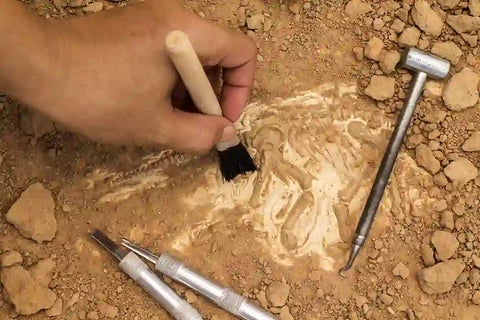Archaeological Writing for Successful Journal Publication and Grades
It has been said that writing is as vital to archaeology as fieldwork is, and it is certainly true that artefacts and sediments do not become exciting propositions and established theories about human behaviour and development on their own. Knowledge, experience, curiosity, analysis, reflection, logic and insight must be combined in effective written communication to bridge the gap between material discoveries and the understanding of the past that is derived from them. Archaeological writing bridges this gap by sharing with its readers plausible and engaging stories about the past that ultimately shape and reshape authoritative perceptions of humanity and its history.
Thinking of archaeological writing as a form of storytelling can establish a foundation on which to build engaging prose. Archaeology may not be fiction, but it can certainly benefit from some of the techniques used by writers of fiction. Hooking the reader’s attention immediately, for instance, is always a good idea and can be achieved by providing interesting background and introductory information that emphasises why the reader should care about your work. The process of your research from first breaking the soil at a new site to examining its artefacts in detail can then be presented as an exciting narrative of gradual discovery. Elements of suspense can be created by revealing information in strategic ways, and asking questions is an excellent policy for generating curiosity in your readers, who will keep reading to find your answers and compare them to the answers that may be running though their minds as they reflect on your finds.
Presenting your research as an exciting narrative is one aspect of the thoughtful organisation required in all archaeological writing. Background information and research results must be balanced with the logical arrangement of your overall argument. A well-designed structure that divides the material you are introducing into sections and subsections that are heralded by catchy and informative headings and subheadings will clarify and more effectively present your argument and evidence. Relatively short sentences, preferably in the active voice, will communicate more efficiently than very long sentences can, but varying your sentences in terms of length and structure is also a good policy. Each paragraph should focus, as much as possible, on a single idea and logically lead the reader into the next paragraph and idea. Transitions between sections, paragraphs, ideas and sentences should be smooth and clear.
Clarity is, after all, absolutely essential for expressing the subtleties and complexities common in archaeological writing. Spelling, punctuation and grammar must be correct. Specialised terminology and nonstandard abbreviations must be defined when introduced and used with precision throughout a document. The dates so central to archaeological work must be applied with the utmost accuracy and consistency if your argument is to be taken seriously, and the dating conventions adopted for a document should be explained for readers. Citations and references must be both accurate and thorough, with every source cited appearing also in the bibliography or list of references, and references usually need to observe a specific style as well. Finally, graphs, maps and photographs can be enormously helpful, but only if they convey the information they contain with clarity and efficiency. They also need to be carefully labelled and specifically referred to in the main discussion so that readers understand their contents and their precise role in your research and argument.
Why Our Editing and Proofreading Services?
At Proof-Reading-Service.com we offer the highest quality journal article editing, dissertation proofreading and online proofreading services via our large and extremely dedicated team of academic and scientific professionals. All of our proofreaders are native speakers of English who have earned their own postgraduate degrees, and their areas of specialisation cover such a wide range of disciplines that we are able to help our international clientele with research editing to improve and perfect all kinds of academic manuscripts for successful publication. Many of the carefully trained members of our manuscript editing and proofreading team work predominantly on articles intended for publication in scholarly journals, applying painstaking journal editing standards to ensure that the references and formatting used in each paper are in conformity with the journal’s instructions for authors and to correct any grammar, spelling, punctuation or simple typing errors. In this way, we enable our clients to report their research in the clear and accurate ways required to impress acquisitions proofreaders and achieve publication.
Our scientific proofreading services for the authors of a wide variety of scientific journal papers are especially popular, but we also offer manuscript proofreading services and have the experience and expertise to proofread and edit manuscripts in all scholarly disciplines, as well as beyond them. We have team members who specialise in medical proofreading services, and some of our experts dedicate their time exclusively to dissertation proofreading and manuscript proofreading, offering academics the opportunity to improve their use of formatting and language through the most exacting PhD thesis editing and journal article proofreading practices. Whether you are preparing a conference paper for presentation, polishing a progress report to share with colleagues, or facing the daunting task of editing and perfecting any kind of scholarly document for publication, a qualified member of our professional team can provide invaluable assistance and give you greater confidence in your written work.
If you are in the process of preparing an article for an academic or scientific journal, or planning one for the near future, you may well be interested in a new book, Guide to Journal Publication, which is available on our Tips and Advice on Publishing Research in Journals website.








